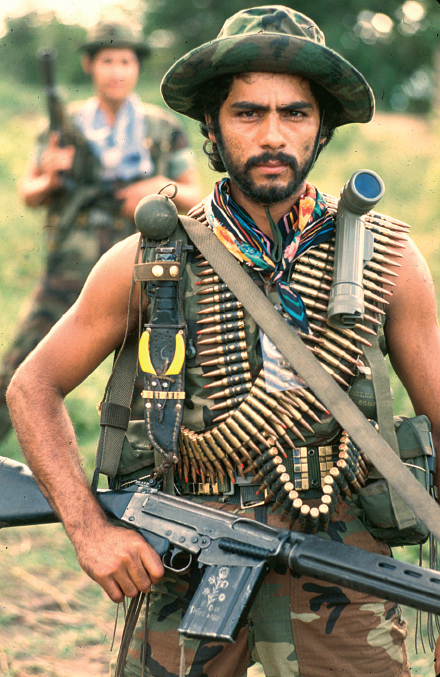Understanding World Societies:
Printed Page 1002
Civil Wars in Central America

A member of the Contra paramilitary force, which was armed and trained by the United States to fight against the socialist Sandinista government in Nicaragua. (© Bill Gentile/ZUMAPRESS.com)
Central America experienced the greatest violence in Latin America during the Cold War. In the second half of the twentieth century nationalists in Central America sought economic development that was less dependent on the United States and U.S. corporations, and groups of peasants and urban workers began to press for political rights and improved living standards. Through the lens of the Cold War, Central American conservatives and the United States government saw these groups as Communists who should be suppressed. In turn, many workers and peasants radicalized and formed Marxist revolutionary movements. The result of this conflict, and of U.S. support for right-
In Guatemala reformist president Jacobo Arbenz was deposed in a military coup organized by the CIA in 1954. Subsequent Guatemalan leaders backed by the U.S. government violently suppressed peasant movements, resulting in the likely death of over two hundred thousand mostly indigenous people.
El Salvador and Nicaragua, too, faced civil wars. In 1979 the Sandinista movement overthrew dictator Anastasio Somoza Debayle. The Sandinistas, who conducted a revolutionary transformation of Nicaragua inspired by Communist rule in Cuba, were undermined by war with a U.S.-trained and U.S.-financed insurgent army called the Contras. In El Salvador a right-
U.S. policies that encouraged one faction to fight against the other deepened political instability and repression and intensified these civil wars. Acting against U.S. wishes, in 1986 Costa Rican president Oscar Arias mediated peace talks among the warring factions in Nicaragua, El Salvador, and Guatemala, which ended the wars and initiated open elections in each country, with former armed rivals competing instead at the ballot box.